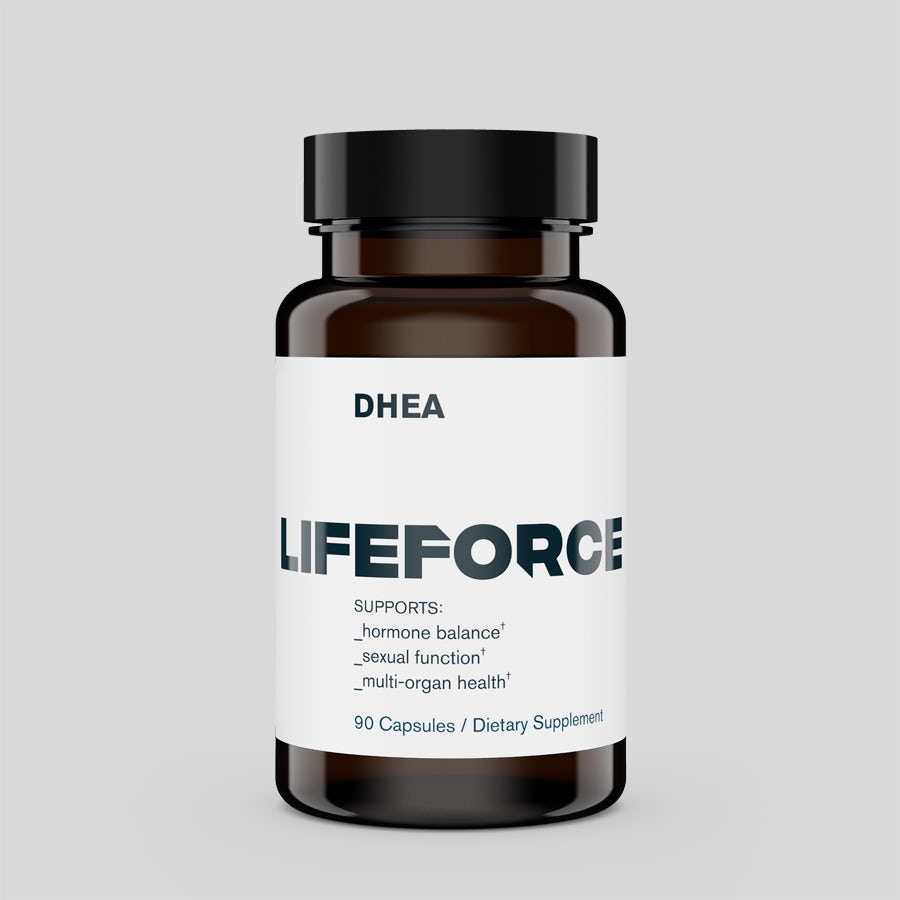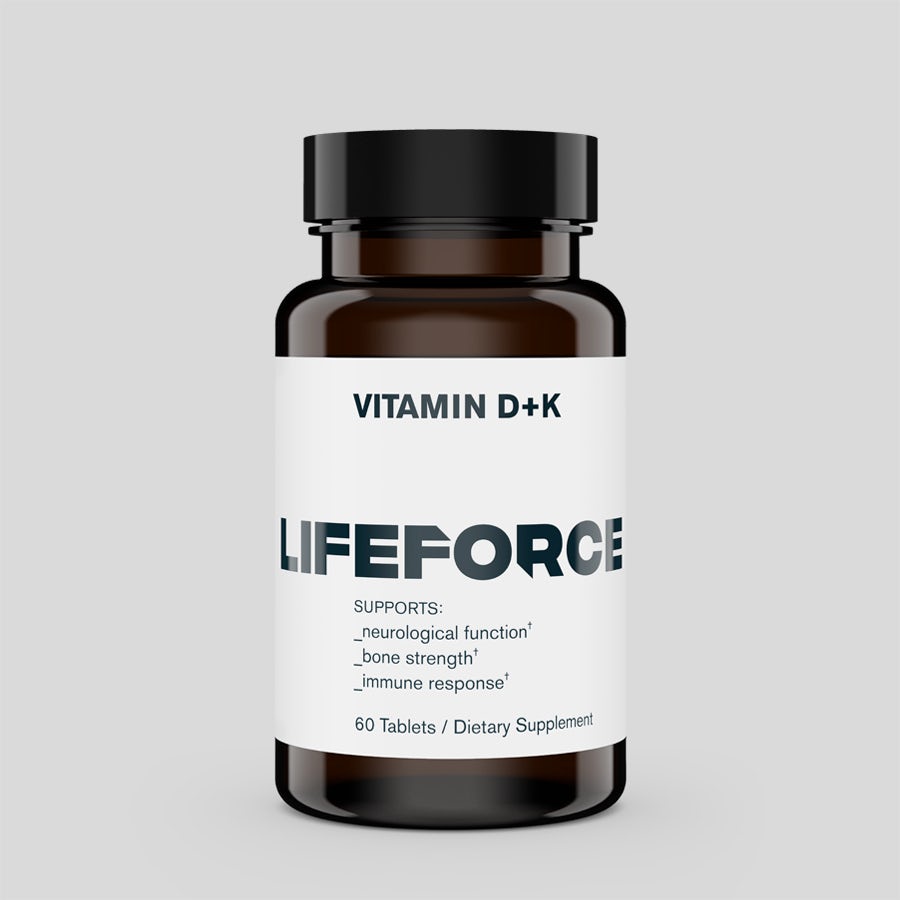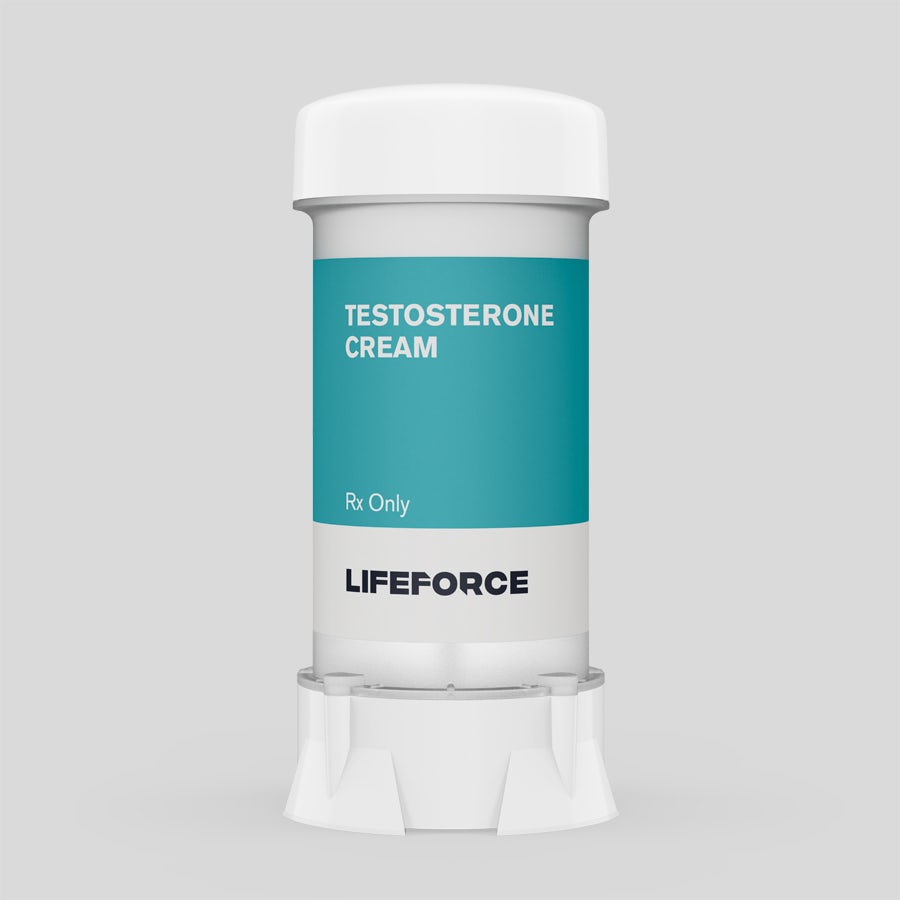‘Balancing your hormones’ is a hot topic in the wellness world, but what does that actually mean? Here’s the gist: Hormones are chemicals that carry signals through the blood to your organs, skin, muscles, and other tissues telling them what to do. There are more than 50 hormones in the body, and they all contribute to different processes.
Most people think of sexual wellness and reproduction when they hear the word ‘hormones,’ but that’s just one piece of the puzzle. “Hormones affect far more than just our sex organs. They can impact our sleep, memory, thinking, metabolism, body composition, and mood,” says Lifeforce Physician Kimberly Hartzfeld, DO. “And that's just the tip of the iceberg. In fact, our ability to sustain life and maintain well-being depends on our hormones.”
That’s a big job, and it requires a delicate balance. If you have too much or too little of one — or multiple — hormones, you can experience weight gain, mood changes, low libido, sexual dysfunction, brain fog, and more. “Even general symptoms such as fatigue or anxiety can be a sign of a hormone imbalance,” explains Dr. Hartzfeld.
If you’re dealing with any of these symptoms, the first step is getting a complete picture of your hormone levels. “Since they are vital to our existence and our happiness, you want to know where your levels are at in an effort to optimize your health,” says Dr. Hartzfeld. “What you don’t know could be holding you back from feeling your best.”
So, why not have all the knowledge at your fingertips? The Lifeforce Diagnostic tests for 40+ biomarkers, including those that are essential for hormone balance. Here are the eight most important biomarkers you need to know to stay on top of your hormone health.

8 Biomarkers You Need to Know for Hormone Health
1. Estradiol
Estradiol, also known as E2, is a form of estrogen. “In women, estradiol supports female organs including the uterus, vagina, breasts, and bladder,” says Dr. Hartzfeld. “Estradiol is the main estrogen during the reproductive years, and it drops in menopause.” When estradiol levels go down, this can lead to decreases in cognitive function, changes in mood, vaginal dryness, and even make skin and hair thinner.
While estrogen is known as the ‘female hormone,’ it’s important for men, too. “In men, estradiol is needed to balance testosterone and support sex drive, sperm production, and erectile function,” says Dr. Hartzfeld.
Optimal levels:
In men: 10 - 50 pg/mL
In women: This depends on age and timing of the menstrual cycle. In menopausal women on hormone therapy, the optimal range is 50 - 100 pg/mL. In women in the reproductive age range, normal levels are 30 - 400 pg/mL. Optimal levels depend on the timing of the cycle.
It’s important to note that ‘normal’ levels are different from optimal. “Most blood tests are checked against ‘normal’ levels based on the average of the people who go to that lab,” says functional medicine expert Kerri Masutto, MD.” At Lifeforce, we aim to help you reach optimal ranges that support peak performance and enhanced longevity and healthspan.
How to optimize it: For either men or women with high levels of estradiol, a supplement called DIM (diindolylmethane) can help metabolize the hormone, says Dr. Hartzfeld. DIM is an active ingredient in cruciferous vegetables, so she also recommends a diet high in fibrous greens like kale, bok choy, broccoli, and Brussels sprouts.
For low estradiol in women, Dr. Hartzfeld suggests increasing phytoestrogens in your diet, including soy (non-GMO), flaxseeds, legumes, and red clover. Also check your DHEA levels. If you’re suboptimal, you can add a DHEA supplement which converts to testosterone and estradiol. “Estradiol replacement therapy is also an option, with a transdermal application — such as an estradiol patch — being the safest form,” says Dr. Hartzfeld. To treat vaginal dryness and painful intercourse specifically, Lifeforce offers an Estradiol Cream.
2. Progesterone
Along with estradiol, progesterone is the other primary hormone in women. Produced in the ovaries, progesterone’s “main functions are to support the menstrual cycle and pregnancy,” says Dr. Hartzfeld. “It also impacts mood, sleep, and cognition, which is especially important in menopause when levels drop.” Optimizing progesterone levels has been shown to enhance sleep quality and brain processing in menopausal and postmenopausal women.
Optimal levels:
In women: 1.5 - 8 ng/mL
How to optimize it: For women in the reproductive age range, Dr. Hartzfeld says that chasteberry, a natural plant supplement, can help the body increase progesterone production. For women in perimenopause and menopause, she recommends oral micronized progesterone to help improve sleep, mood, and night sweats.
Lifeforce’s Hormone Optimization for Women offers micronized progesterone, which means that it is molecularly identical to the progesterone our ovaries produce naturally. This is important because synthetic progesterone has been associated with increased risk of breast cancer in some outdated research. Recent studies suggest that micronized progesterone may in fact help prevent breast cancer.

3. Testosterone
Known as the ‘male hormone,’ testosterone is the primary sex hormone in men that supports the testes and prostate. “It helps regulate sex drive, erectile function, and sperm production,” says Dr. Hartzfeld.
Although we typically think of testosterone for men, it’s essential for women’s health and quality of life, too. (Read more about why here.) In both sexes, testosterone is key for libido, mood, cognition, and lean muscle mass. It’s the hormone that gives you your get-up-and-go drive, and when your levels are off, you may feel sluggish and unmotivated.
There are two forms of testosterone: total and free. Total testosterone is exactly what it sounds like — the total amount of testosterone in your body, which includes forms that are bound and those that are free for use. This is where the importance of free testosterone comes in.
“Free testosterone is the portion of testosterone that is not bound to proteins, and is therefore available to act on cells and tissues throughout the body,” says Lifeforce Physician
Alex Antoniou, MD. You need to optimize both forms to get your groove back.
Optimal levels of total testosterone:
In men: 700 - 1,200 ng/dL
In women: 50 - 80 ng/dL
Optimal levels of free testosterone:
In men: 150 - 190 pg/mL
In women: 6.7 - 9 pg/mL
How to optimize both:
“It's important to maintain a healthy weight, exercise regularly, manage stress, get enough sleep, and eat a balanced diet that includes healthy fats, protein, and zinc,” says Dr. Antoniou. When it comes to exercise, go big. Research shows that strength training large muscle groups such as glutes, hamstrings, and quads can increase testosterone. Get 5 lower body exercises that support healthy hormone balance here.
Dr. Hartzfeld also notes that supplementing with omega-3s and DHEA — the precursor to testosterone — supports hormone production. (Read on for more details on DHEA).
When it comes to pharmaceutical support, “Clomiphene helps boost testosterone while preserving fertility in men,” notes Dr. Hartzfeld. Lifeforce also offers testosterone optimization therapy with a Testosterone Injection and Testosterone Cream. After your Lifeforce Diagnostic, you will work closely with a Lifeforce Physician to decide the best course of treatment for your individual needs and goals.
4. Sex Hormone Binding Globulin (SHBG)
“SHBG is a protein produced by the liver that binds to sex hormones — including testosterone and estrogen — and regulates their availability in the body,” explains Dr. Antoniou. When we talk about total vs. free testosterone, SHBG is a key piece of the equation. A high SHBG level means it’s likely that less free testosterone is available to use in your body. A low SHBG level indicates more of your testosterone is bioavailable.
Optimal levels:
"The optimal range for SHBG varies depending on gender, age, and other factors. Men tend to have lower SHBG levels, and both men and women experience a gradual increase in SHBG levels as we get older," says Dr. Antoniou. Your Lifeforce Physician will be able to gauge if your SHBG is too high or too low relative to your other hormone levels and needs to be optimized.
How to optimize it:
The lifestyle shifts that optimize testosterone will also help with your SHBG levels. Dr. Antoniou again recommends maintaining a healthy weight, staying active, and eating a balanced diet that is low in refined sugars and processed foods.
Protein is also a powerhouse nutrient when it comes to reducing SHBG in your blood. Dr. Antoniou suggests aiming for .5 - 1 gram of protein per pound of body weight per day, depending on your activity levels. Healthy protein sources include lean meats and poultry, fish, eggs, legumes, and chia seeds.

5. Dehydroepiandrosterone (DHEA)
We’ve talked a little bit about DHEA in relation to other hormones, and now it’s time to really dive in. “DHEA is a hormone produced by the adrenal glands in both men and women. It has androgenic or ‘male type’ influences on the body,” explains Dr. Hartzfeld, but it’s essential for both sexes. One of the reasons that DHEA is so important is that it’s converted to testosterone or estrogen.
“DHEA supports mood, energy, cognition, and muscle mass,” says Dr. Hartzfeld. “In women, it also improves vaginal tissue when used locally to help decrease vaginal dryness in menopause.” Like with many hormones, DHEA peaks in early adulthood and declines with age.
Optimal levels:
In men: 400 - 500 ug/dL
In women: 250 - 350 ug/dL
How to optimize it:
Stress can mess with your DHEA levels. “You can manage stress through relaxation techniques such as yoga, meditation, and deep breathing,” says Dr. Antoniou. He also stresses the importance of exercise, quality sleep, and getting plenty of protein and healthy fats in your diet.
Lifeforce’s DHEA supplement will also give you a major assist. It has a unique formula of low-dose DHEA, Pregnenolone, and 7-Keto DHEA, to help optimize your levels.
6. Thyroid Stimulating Hormone (TSH)
We can’t talk about important hormones without getting into the thyroid. TSH is produced by the pituitary gland and stimulates the thyroid to release hormones. Dr. Hartzfeld explains that the main thyroid hormones are T3 and T4. Our bodies convert T4 to T3, the active hormone.
“The thyroid’s main role is to regulate metabolism, which is the rate at which your body takes food and converts it into energy for our cells to use,” says Dr. Hartzfeld. “Without energy, our cells can’t function and organs start to fail, leading to chronic disease.”
Optimal levels:
In men and women: 0.5 - 2.5 uIU/mL
How to optimize it:
Pack your diet with nutrients like selenium, zinc, iodine, vitamin A, and vitamin D, recommends Dr. Hartzfeld. Brazil nuts, fish, and lean meats are rich in selenium. Meat, fish, and legumes are good sources of zinc, while fish and seaweed deliver plenty of iodine. Load up on leafy greens for vitamin A and salmon for vitamin D (more on that important nutrient in a minute).
For extra support, Lifeforce prescribes Desiccated Thyroid Hormone Optimization. It contains both T4 and T3 hormones that are molecularly identical to the ones our bodies produce.
7. Insulin-Like Growth Factor 1 (IGF-1)
IGF-1 is a hormone made by the liver that helps promote cell growth. “Optimal IGF-1 levels can help support energy, muscle mass, recovery after exercise, cognition, mood, and skin,” says Dr. Hartzfeld. She notes that high IGF-1 levels have been shown in studies to be correlated with certain cancers such a prostate, breast, and colon. Some research shows that diets high in dairy can increase IGF-1 levels.
Optimal levels:
In men and women: The normal range for IGF-1 depends on your age, and levels decline as we get older. To maintain an optimal IGF-1 level, you want to aim for the top 25th percentile of your normal range. For example, if your normal range is 50 - 200 ng/mL, then your optimal range is 162 - 200 ng/mL.
How to optimize it:
Healthy lifestyle shifts like intermittent fasting and high intensity interval training (HIIT) can support your IGF-1 levels, says Dr. Hartzfeld. She also recommends taking the plunge into cold plunges. In addition to helping hormone balance, they can improve mood and focus and help reduce anxiety. (Read more about the cool benefits of cold therapy here).

8. Vitamin D
What is a vitamin doing on a hormone list? Hear us out, because it’s important to shed light on the sunshine vitamin in addition to the more ‘typical’ hormones. “Vitamin D is a vitamin that acts like a hormone,” says Dr. Hartzfeld. “It is involved in more than 200 processes in the body, including supporting hormones, immune function, bone mass, cardiovascular health, energy, and cognition. Our skin uses sunlight to make vitamin D, and as we get older, this process is less efficient.” Additionally, some people’s genetics contribute to deficiencies in vitamin D production.
“Vitamin D deficiency has been shown in multiple studies to be correlated with depressed mood as well as with reduced production of serotonin,” adds Dr. Antoniou.
Optimal levels:
In men and women: 50 - 100 ng/mL
How to optimize it:
Take your moment — or moments — in the sun. Dr. Hartzfeld recommends 10 to 30 minutes of sunlight exposure a few times a week, depending on where you live and being mindful of sunburn risks. You can also get D from nutritious food sources like salmon, swordfish, egg yolks, and sardines.
Lifeforce offers a clinician-grade Vitamin D+K formula,featuring a highly bioavailable form of vitamin D, CELLg8®, which has been shown to significantly raise vitamin D levels thanks to its liposomal delivery system. Adding vitamin K to the mix ensures that calcium is deposited in the bone, versus the soft tissue, for the best results.
Ready to Check Your Levels?
Test all these hormone balance biomarkers — plus biomarkers for your metabolic condition, critical nutrients, organ health, and key risk factors — with the Lifeforce Diagnostic.
Plus, be on the lookout for more blog posts in this series, where we break down the most important biomarkers for every area of your health.
This article was medically reviewed by:
Kimberly Hartzfeld, DO, ABOG American Board of Obstetrics and Gynecology, IFMCP Institute for Functional Medicine Certified Practitioner
Alex Antoniou, MD, ABNM Board Certified in Nuclear Medicine







